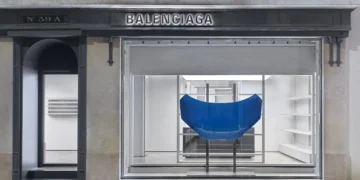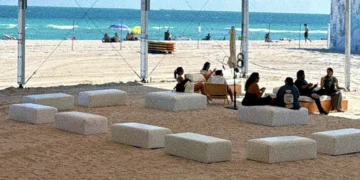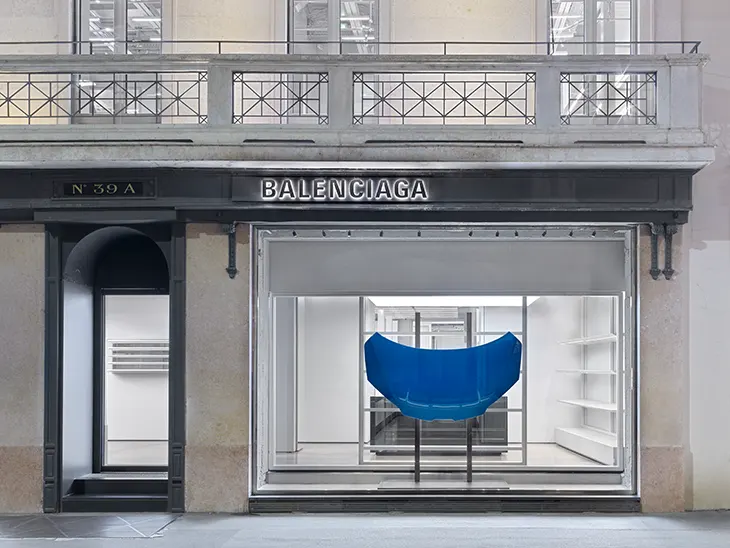
Balenciaga extends its Art in Stores initiative with a new collaborative installation in partnership with Automobili Lamborghini, on view from May 22, 2025. The project introduces a sculptural work by German artist Yngve Holen, developed using elements from the Lamborghini Temerario. This installation appears in the windows of select Balenciaga flagship locations, including Avenue Montaigne in Paris, Via Montenapoleone in Milan, and New Bond Street in London.
ART
Holen’s new work continues his exploration of machine aesthetics and industrial materials. Known for sculptural projects that reference design, body, and technology, Holen turns automotive parts into meditations on structure and function. For this project, he uses components from the Lamborghini Temerario, a vehicle defined by its engineered precision and distinctive surfaces. Rather than present the car in full, Holen disassembles select parts and mounts them onto support systems modeled after those found on actual production lines.
The materials, extracted from the vehicle’s body, do not simply replicate automotive design. Holen uses them to draw parallels between industrial fabrication and garment construction. He positions car body panels as stand-ins for clothing patterns, referencing the templates designers use when cutting fabric. Through this shift in context, the pieces adopt a new function: they now reflect processes from fashion production rather than high-performance engineering.
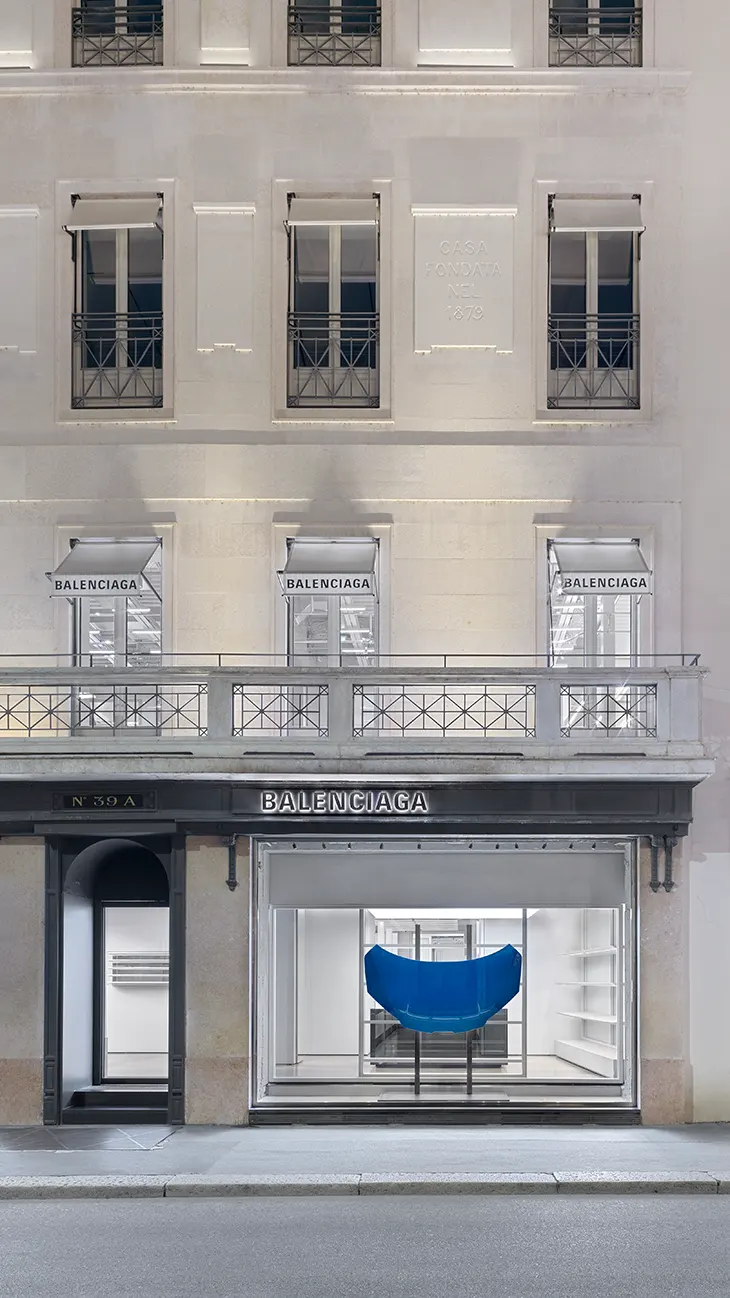
By placing these sculptural works in Balenciaga storefronts, the project bridges product and concept. The industrial frames used for display recall manufacturing rigs, but they also double as visual devices. Their utilitarian nature underlines the mechanical source of the materials while contrasting with the luxury environment of the stores. The dual presence of machine and boutique reshapes how viewers experience both fashion and design.
The installation situates Holen’s practice within Balenciaga’s larger vision, where collaboration with contemporary artists invites reflection on construction, shape, and the systems behind them. Holen’s approach fits this narrative by dissecting the materials of speed, force, and precision, translating them into objects that address absence as much as presence. His use of hollow forms and repurposed surfaces suggests bodies without showing them, frames without volume, and fashion without fabric.
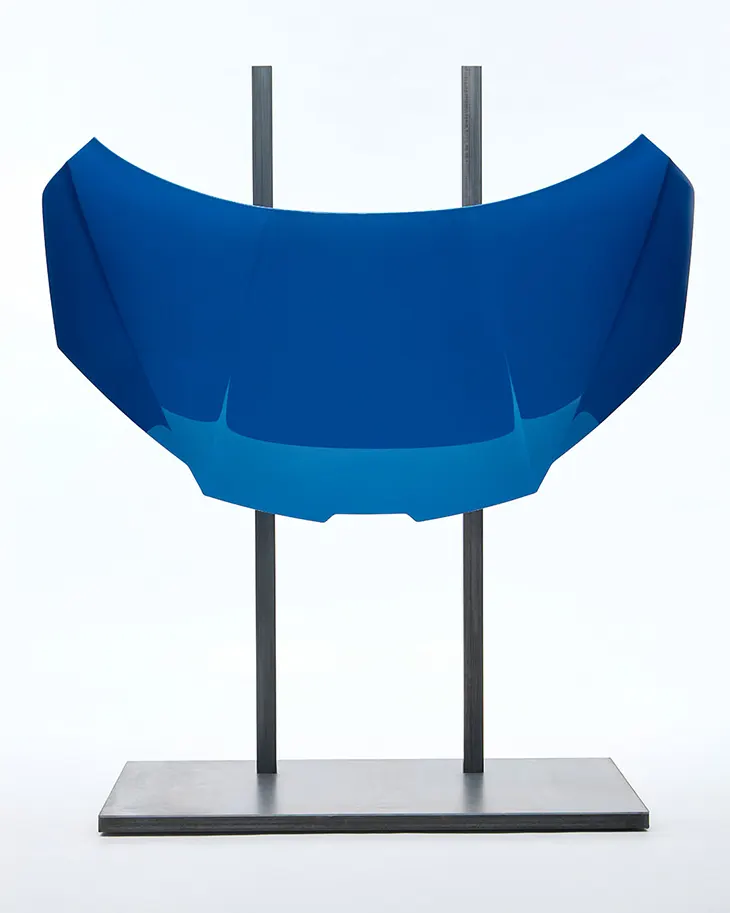
The choice of the Temerario as a source material reinforces the collaboration’s focus on transformation. Lamborghini’s design language, known for its aerodynamic sharpness and structural efficiency, provides a visual counterpoint to Holen’s re-contextualization. In his hands, what once powered forward momentum becomes static, introspective, and spatial. The vehicle proposes a question about how people relate to systems, forms, and the technology that shapes both.
Balenciaga’s locations in Paris, Milan, and London provide more than display real estate. These flagships act as nodes in the project, allowing the work to engage different audiences within fashion capitals. Each site, through its specific architectural and urban context, frames the installation differently, shifting how passersby interact with the piece.
The collaboration with Lamborghini and Holen turns the storefront into a platform where sculpture and commerce coexist. It removes the showroom from its usual function and replaces it with a site of reflection, where machine-made forms suggest both apparel and assembly lines, precision and abstraction.
